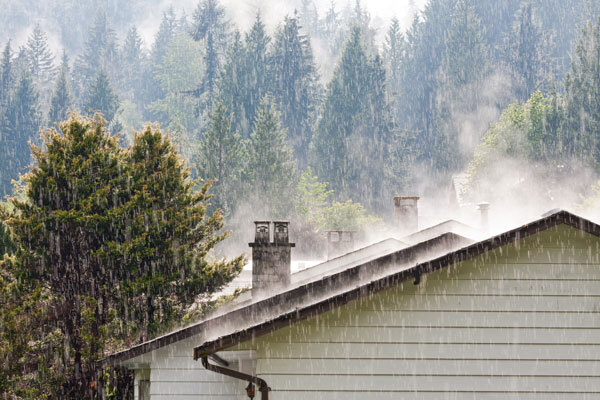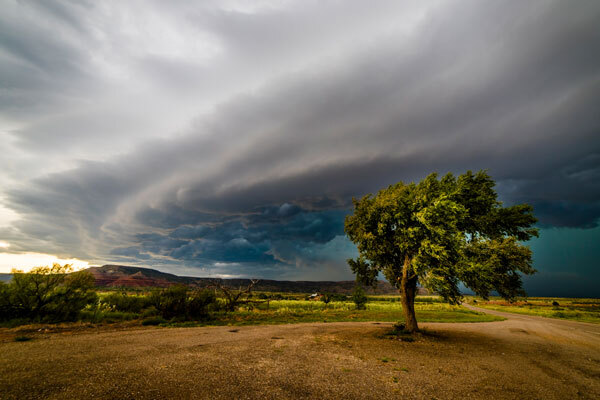13 Sep How to Prepare for a Hurricane or a Big Storm: Essential Steps for Safety
 During emergency weather situations, there are many plans to make and issues to sort out quickly. Stay one step ahead of a potential tropical storm by creating a hurricane preparedness plan.
During emergency weather situations, there are many plans to make and issues to sort out quickly. Stay one step ahead of a potential tropical storm by creating a hurricane preparedness plan.
Whether you want to protect your personal items or your entire business, our team will provide support before, during, and after the storm.
Review our tips below to learn about hurricane preparedness and safety tips to help protect your home and your family in the event of an impending storm and visit our Hurricane Resource Center for additional resources.
Hurricane preparedness plan
The most important step is to create an emergency hurricane preparedness plan and review it regularly so that all family members know what to do.
- Know your home’s vulnerability to storm surge, flooding, and wind. Flood maps are available at www.fema.gov.
- Keep an eye on weather forecasts and warnings from reputable sources such as the National Weather Service, NOAA Weather Radio, or local news channels. Subscribe to weather alerts on your smartphone for real-time updates.
- Locate the safest areas to shelter within your home.
- Determine escape routes from your home and places to meet. Your county and state should have evacuation routes available online. Have multiple options in mind in case of road closures.
- Plan where you will go if evacuation is necessary. This may be a friend or relative’s home or a nearby shelter. Go to www.redcross.org to locate open shelters.
- Post emergency telephone numbers by your phones and keep a copy with you.
- Establish a family communication plan. Ensure everyone knows how to reach each other and where to meet in case of separation.
- Never let your car’s gas tank go below a quarter tank. Gas may not be readily available in an emergency situation.
- Reinforce windows: Install hurricane shutters or plywood over windows to prevent debris from breaking them.
- Trim trees and bushes: Prune overhanging branches and remove dead trees to reduce the risk of falling debris.
- Secure outdoor items: Bring in or secure loose objects like lawn furniture, grills, and trash cans.
- Check your roof: Ensure your roof is in good condition and make any necessary repairs.
- Reinforce doors: Strengthen exterior doors with deadbolt locks or hurricane-resistant doors.
- If your vulnerable home is a secondary residence, identify a local contact to help secure the property and engage the shutters in the event of a storm.
- Keep a copy of your plan including contact numbers and addresses in your Go Bag, which is described below.
Assemble emergency supplies
If you are not evacuating your home, it will be important to have the following emergency hurricane preparedness supplies on hand:
- One gallon of drinking water per person per day.
- Iodine tablets or one quart of unscented bleach (for disinfecting water only if directed to do so by health officials) and an eyedropper (for adding bleach to water).
- Nonperishable, ready-to-eat canned foods, and a manual can opener.
- First-aid kit, medications, and prescriptions.
- Fire extinguisher, candles, and matches.
- Portable cooler with ice.
- Plastic garbage bags.
- Plywood or other shuttering material for windows.
- A generator.
- Your Go Bag, including the items listed below.
Put together a go bag
For each household member, assemble a Go Bag — a collection of hurricane preparedness items you may need in the event of an evacuation. Each Go Bag should be packed in a sturdy, easy-to-carry container such as a backpack or suitcase on wheels. A Go Bag may include:
- Copies of your important documents in a waterproof and portable container (insurance cards, birth certificates, deeds, photo IDs, proof of address, etc.).
- Emergency contact and meeting place information for your household and a small regional map.
- Credit and ATM cards, and cash, especially in small denominations.
- Extra set of car and house keys.
- Flashlight, whistle, emergency radio, and extra batteries.
- Cell phone charger(s) including one that can be used without electricity, such as a car charger, and an extra cell phone battery.
- Bottled water and nonperishable food such as energy or granola bars.
- Medication for at least one week and other essential personal items. Keep a list of any medications and dosages for each member of your household, or copies of all your prescription slips, as well as your doctor’s contact information.
- Sturdy, comfortable shoes, lightweight rain gear, and a mylar blanket.
- Childcare supplies or other special care items.
- Tools: Include basic tools like a multi-tool, wrench, and pliers for utility shut-offs.
- Personal hygiene items: Soap, hand sanitizer, toothbrush, and other toiletries.
- Entertainment: Books, games, or activities to keep yourself and your family occupied.
 As a storm approaches
As a storm approaches
- Stay informed through radio and TV broadcasts. If told to evacuate, do so immediately.
- Secure your home. Shutter windows securely and brace outside doors.
- Bring loose, lightweight objects indoors.
- Anchor objects that are unsafe to bring inside, such as gas grills or propane tanks.
- Place valuables in waterproof containers or plastic bags.
- If you are going to an evacuation shelter, pack what you need for several days, including your Go Bag, sleeping bag, blankets, pillows, and auxiliary medical equipment.
- Check on friends, relatives, and neighbors. Assist them with their preparation if needed.
- If authorities issue an evacuation order, follow it promptly. Do not underestimate the power of hurricanes or big storms. Your safety and the safety of your family should always be the top priority.
Before leaving your home
- Turn off home electricity with a main switch.
- Shut the gas valve at the appliance, not the main.
- Tell friends/relatives/neighbors where you are going.
Preparing for a hurricane or big storm can make a significant difference in how you and your family weather the event. By staying informed, creating an emergency plan, assembling an emergency kit, securing your home, and evacuating when necessary, you can mitigate the risks associated with these natural disasters.
Potential threats from hurricanes include powerful winds, heavy rainfall, storm surges, coastal and inland flooding, rip currents, tornadoes, and landslides. The Atlantic hurricane season runs from June 1 to November 30. The Pacific hurricane season runs from May 15 to November 30. For more information about your current coverage and additional available coverage, please contact our team here.



